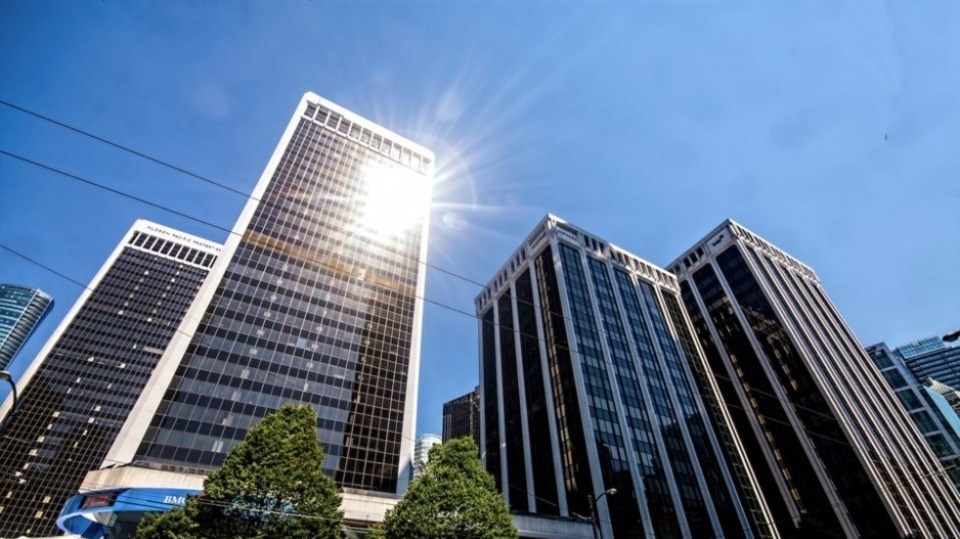In order to fight climate change and increase their asset values, owners of large buildings in Vancouver should go above and beyond new greenhouse gas reporting requirements, sustainability experts told a recent industry panel.
Building owners should not just measure and report their emissions to the city, as many are now required to do, but they should also develop decarbonization plans and strategies, the experts said. Measuring and reporting a large building’s emissions is just the starting point; a building owner should then identify its carbon-intensive equipment and undertake targeted retrofits to maximize return on investment and asset values.
“It’s in every building owner’s best interest to develop a decarbonization plan as soon as possible and start following through,” Chris Kasianchuk, vice-president of sustainability and managing broker of Warrington PCI Management, told an Aug. 29 panel hosted by Urban Land Institute (ULI) BC.
Vancouver’s new bylaw requires mandatory reporting of greenhouse gas emissions from commercial buildings greater than 100,000 square feet, and the bylaw will be expanded in 2025 to commercial buildings over 50,000 square feet and multi-family buildings greater than 100,000 square feet.
But after they have complied, building owners need to move from the reporting phase to the action phase, Kasianchuk said. That means starting with a benchmark, developing your portfolio’s policy and setting some reduction targets. This entails itemizing the equipment list in buildings to identify where exactly a building’s emissions are coming from, and then building out a capital plan to replace those at end-of-life or sooner, he said.
ULI panel member Eoghan Hayes, managing director of Edge Consultants, said this approach will allow building owners to target their retrofits to make them more cost-effective.
“What are the low-hanging carbon fruits of the building that you want to focus on?” he said. “You need the data to know if your retrofit is going to be effective or targeting the right things. Otherwise, you could do more harm than good.”
The panel members told the audience that decarbonization plans have financial benefits such as improving asset values and lease rates.
“Lenders and insurers are requesting robust proof and providing better rates and terms to those who have embraced sustainability,” said Kasianchuk. “Buyers want to purchase a property that’s already compliant, and sellers, if they haven’t undertaken decarbonization measures or put a plan in place, will be faced with a stranded asset or the purchase price will be reduced by a so-called brown discount.”
Kasianchuk and Hayes agreed that complying with Vancouver’s new bylaw is relatively straightforward, and that the city’s website is fairly easy to navigate and use. Using a checklist can assist clients in gathering the necessary information, and obtaining energy use data on a meter-by-meter basis can provide additional granularity.
But there are some potential difficulties with compliance, they said. This includes comparing and contrasting gross floor area data with the city’s records, situations where multiple addresses are associated with one building, and gaining access to meters controlled by tenants.
“Since there are no obligations for [tenants] to report, some cross their arms and say ‘I’m not participating’ but the onus is still on the landlord,” said Kasianchuk.
Ultimately, the panellists suggested that public disclosure of building emissions data would be a logical next step for Vancouver to better fight climate change and catch up with other leading municipalities in North America. Other green-forward cities have public databases that can be searched by building type, emissions and Energy Star ratings. Such enhanced disclosure can spur competition between building owners and drive innovation.
“I’m hoping we’re getting there sooner rather than later,” said Hayes. “Without that social factor impact, the amount of change is not going to be as significant as we need. Fees and taxes are not going to be as impactful if we don’t take that to the next level of disclosure. We need that peer pressure along with a whole host of other solutions in order to hit the 2 or 1.5 degrees [Celsius] target” for limiting global warming.
For Vancouver’s bylaw to have any meaningful impact on climate change, other cities in British Columbia will have to follow suit, Kasianchuk said, but currently “there are no other municipalities that are ready to launch a bylaw similar to the City of Vancouver, full stop.” Some cities have carbon reduction targets but those only apply to their own municipal assets rather than all large buildings in their jurisdictions, he said.




